Table of Contents
-
What You Need to Think About When Choosing Social Stories
-
Top 25 Social Stories That Actually Work
-
Daily Living Skills Stories
-
Social Interaction and Communication Stories
-
School and Learning Environment Stories
-
Emotional Regulation and Coping Stories
-
Community and Independence Stories
-
-
Breaking Down What Makes These Stories Work
-
How Modern Tools Can Help You Create Better Stories
-
The Real Talk You Need to Hear
TL;DR
-
Social stories are tools that actually work when you match them to your kid’s world—not some textbook version of it
-
The best stories use your child’s obsessions (yes, even the weird ones) and speak their language
-
These 25 stories cover everything from morning routines to making friends, but you’ll need to tweak them for your situation
-
Timing matters more than you think—never introduce a new story during a meltdown (trust me on this one)
-
Your family’s values and culture need to fit the story, or it won’t stick
-
There are now AI tools that can help you write personalized stories when you’re stuck staring at a blank page at midnight
What You Need to Think About When Choosing Social Stories
Last week, I watched 8-year-old Emma successfully order her own meal at a restaurant for the first time. Six months ago, she couldn’t even make eye contact with the server. The difference? A simple social story we created together about restaurant visits that featured her favorite dinosaur characters.
Here’s what I wish someone had told me when I started: not all social stories are created equal. I’ve seen beautifully written stories sit unused in drawers because they missed the mark completely. The difference between a story that transforms behavior and one that gets forgotten comes down to understanding what makes your specific kid tick.
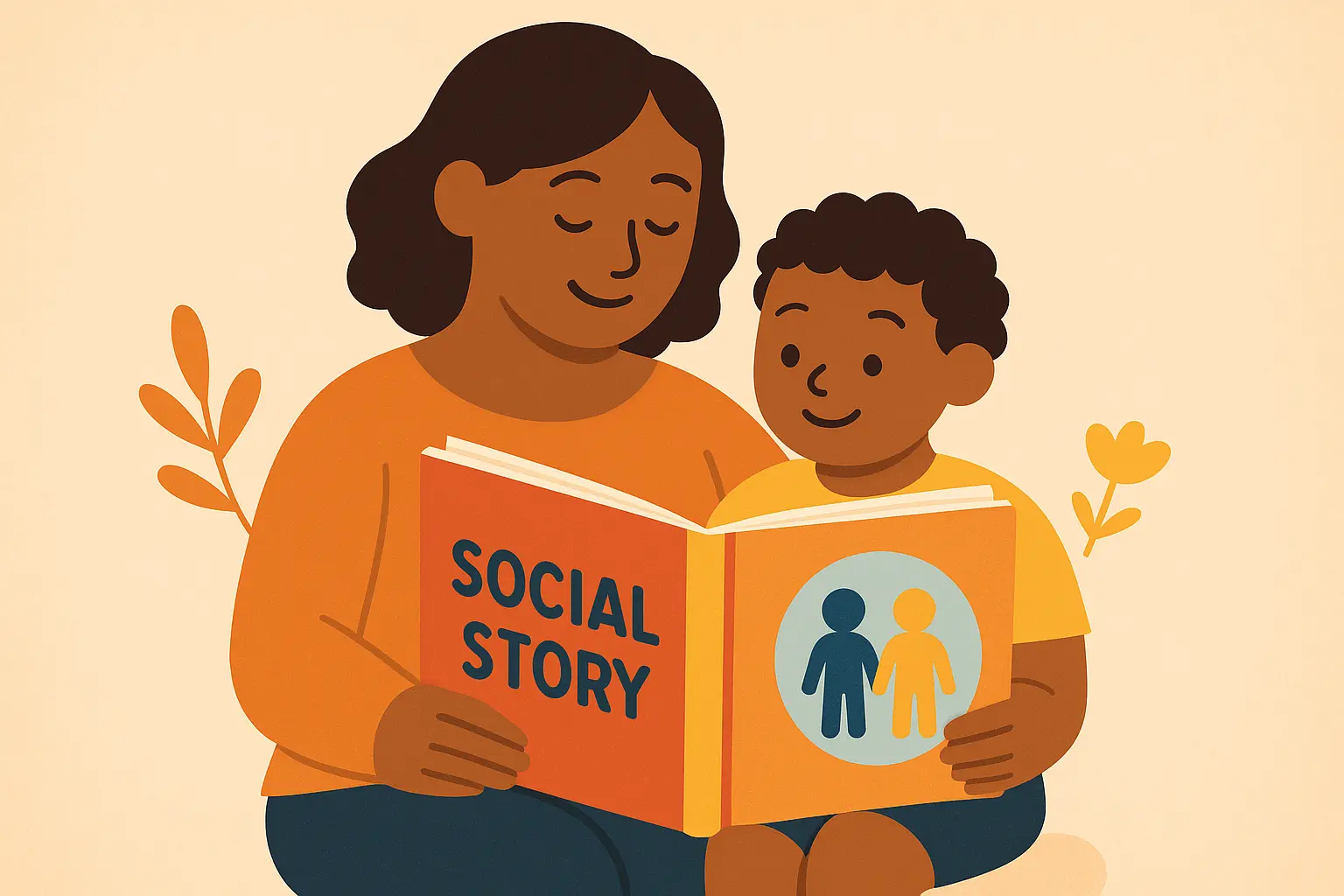
Know Your Kid (Really Know Them)
Here’s what I do: I sit down with a cup of coffee and really think about what makes this kid tick. What gets them excited? What sends them running? Start there, not with some checklist.
Your first job is honestly assessing where your child is right now—not where you hope they’ll be, but where they actually are today. A story written for a high schooler won’t help a kid who’s still learning basic sight words. I learned this the hard way when I spent hours crafting a complex story about friendship that went completely over my student’s head.
Their special interests become your secret weapon. Does your kid love trains? Work trains into every social scenario you can. Obsessed with dinosaurs? Those dinosaurs are going to demonstrate proper bathroom etiquette, and it’s going to work better than any “normal” story you could find.
Sensory stuff matters too. Some kids need big, bold text. Others get overwhelmed by busy pictures. I’ve seen kids refuse to look at perfectly good stories because the font was too small or the pictures were too cluttered.
|
What to Figure Out |
Questions to Ask Yourself |
How to Adjust the Story |
|---|---|---|
|
Where they’re really at |
Can they follow multi-step directions? What’s their actual reading level? |
Make the words simpler, break things into smaller steps |
|
What they’re obsessed with |
What do they talk about nonstop? What makes their eyes light up? |
Put those interests right into the story—everywhere |
|
How they take in information |
Do pictures help or distract? Do they need things spelled out or can they infer? |
Adjust the layout, images, and how detailed you get |
|
How they communicate |
Do they take everything literally? How do they tell you what they need? |
Use their exact way of talking, avoid confusing phrases |
Writing Stories That Actually Make Sense
Clear, concrete language is everything. You’re not writing poetry here—you’re creating a roadmap. I’ve seen too many stories fail because they used phrases that required guessing or cultural knowledge that wasn’t universal.
Positive framing changes everything. Instead of “Don’t interrupt people,” try “I wait for others to finish speaking before I share my thoughts.” This teaches what TO do instead of just highlighting what not to do.
What doesn’t work: “I don’t run in the hallway because it’s bad and I might get in trouble.”
What actually works: “I walk calmly in the hallway. This helps me stay safe and shows respect for others who are learning.”
Make your scenarios realistic. If your story describes a perfect classroom where everyone always follows rules, it won’t prepare anyone for the messy reality of actual school. Include the kid who might be loud or the teacher who might seem grumpy on Monday mornings.
When and How to Use These Stories
Here’s a pro tip that took me way too long to learn: Don’t try to introduce a social story when your kid is already melting down. I learned this during a spectacular grocery store disaster when I thought reading about “using calm voices in stores” would help. It didn’t.
You introduce these stories during calm moments, when their brain can actually process and store the information. Think bedtime, quiet afternoons, or those peaceful moments after breakfast.
One reading won’t cut it. You’ll read the same story dozens of times, and that’s normal. I had one parent tell me they read the same bedtime routine story every single night for three months before their daughter started following it independently. Persistence pays off.
Making Stories Fit Your Family
Your family’s values and culture can’t be afterthoughts. A story about making eye contact might work great for some families but conflict with others’ cultural norms. I once created a story about sharing personal information that completely missed the mark for a family whose culture emphasized privacy differently than mine.
School environments vary wildly too. What works in a small, quiet classroom might be useless in a big, chaotic cafeteria. Think about where these skills will actually be used and adjust accordingly.
Top 25 Social Stories That Actually Work
These aren’t just random stories I pulled together. Each one addresses real situations I’ve seen kids struggle with, and I’ve watched them work when they’re matched to the right child and situation. Some will click immediately. Others might need tweaking. A few might not work for your kid at all, and that’s completely normal.
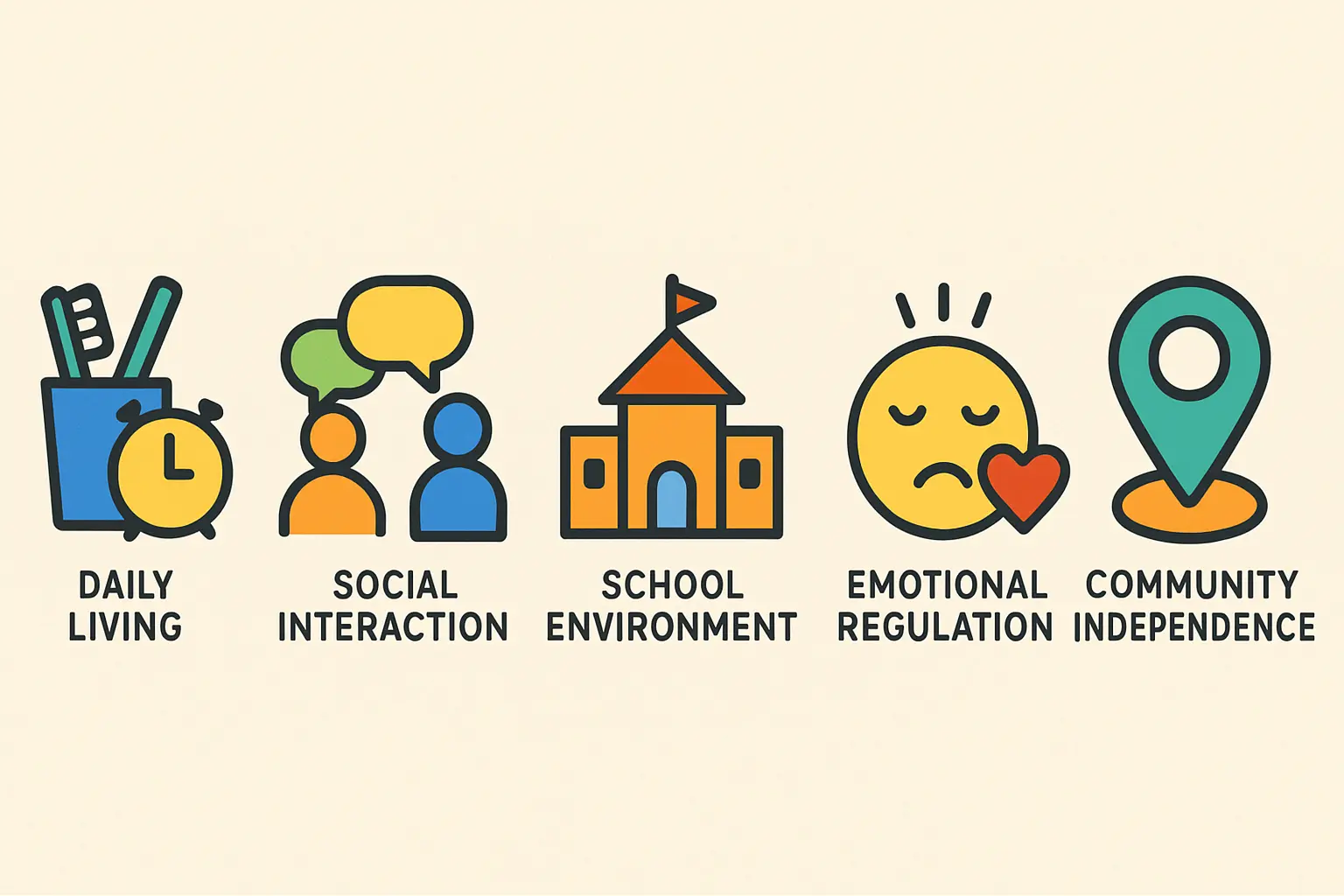
Daily Living Skills Stories
These are your bread and butter stories. Start here. They’re concrete, practical, and you can practice them every single day. Plus, success with these builds confidence for tackling the trickier social stuff later.
1. Morning Routine Mastery
Every morning when I wake up, I follow my special routine that helps me start my day successfully. First, I sit up in bed and take three deep breaths. This helps my body wake up gently. Next, I put my feet on the floor and walk to the bathroom.
I use the toilet, wash my hands with soap for 20 seconds, and brush my teeth for two minutes. After that, I return to my bedroom and choose clothes that match the weather. If it’s cold, I choose warm clothes. If it’s sunny, I choose lighter clothes.
I get dressed one piece at a time, starting with my underwear, then my shirt, then my pants or skirt. Finally, I go to the kitchen for breakfast. Following my morning routine helps me feel calm and ready for my day.
Real talk: This story looks simple, but morning routines can make or break your entire day. I’ve had families tell me this single story eliminated the daily fight about getting ready for school.
2. Grocery Shopping Success
When I go to the grocery store, I bring a list. I get a cart or basket. I walk slowly through the aisles. I find the items on my list. I wait in line to pay. The cashier helps me pay. I say ‘thank you’ and take my groceries home.
Start simple like this, then add details as your kid masters each step. Eventually, you might include what to do when they can’t find something or when the line is really long.
3. Using Public Transportation
Taking the bus is a skill that helps me get to many places independently. Before leaving home, I check the bus schedule and plan to arrive at the stop 5 minutes early. I bring exact change or my bus pass, and I dress appropriately for the weather since I might wait outside.
At the bus stop, I stand in a safe location away from traffic and look for the correct bus number. When my bus arrives, I wait for people to get off before I get on. I greet the driver politely, pay my fare, and find an empty seat or hold onto a rail if the bus is full.
During the ride, I speak quietly if I need to talk and keep my belongings close to me. When I reach my stop, I pull the cord or press the button to signal the driver. I say ‘thank you’ as I exit and wait for the bus to leave before crossing the street.
Fair warning: Don’t attempt this story until your kid has mastered basic safety rules and can handle unexpected situations. Public transportation is advanced stuff.
4. Bedtime Routine
At bedtime, I put on my pajamas. I brush my teeth. I use the bathroom. I get into bed. I read a book or listen to music. Then I close my eyes and go to sleep. A good bedtime routine helps me sleep well.
I’ve had parents laminate this story and put it right next to their kid’s bed. Sometimes the visual reminder is all they need.
5. Doing Laundry
Doing my own laundry is an important life skill that helps me take care of my clothes. First, I collect all my dirty clothes and sort them into two piles: whites and colors. I check all pockets for items that could damage the washing machine or other clothes.
Next, I load one pile into the washing machine, being careful not to overfill it. I add the correct amount of detergent according to the package directions. I select the appropriate water temperature and start the machine. While the clothes wash, I set a timer to remind me when the cycle is finished.
When the washer stops, I move the wet clothes to the dryer or hang them up to air dry. If using the dryer, I clean the lint filter first, then set the appropriate temperature and time. When the clothes are dry, I fold them neatly and put them away. Taking care of my clothes helps them last longer and keeps me looking neat.
This one’s a long-term project. Start by having them help with one step, then gradually add more responsibility.
Social Interaction and Communication Stories
Here’s where things get tricky. These stories tackle the complex world of friendships and social expectations. They take longer to see results, and honestly, they might break your heart a little when you realize how hard social stuff is for your kid.
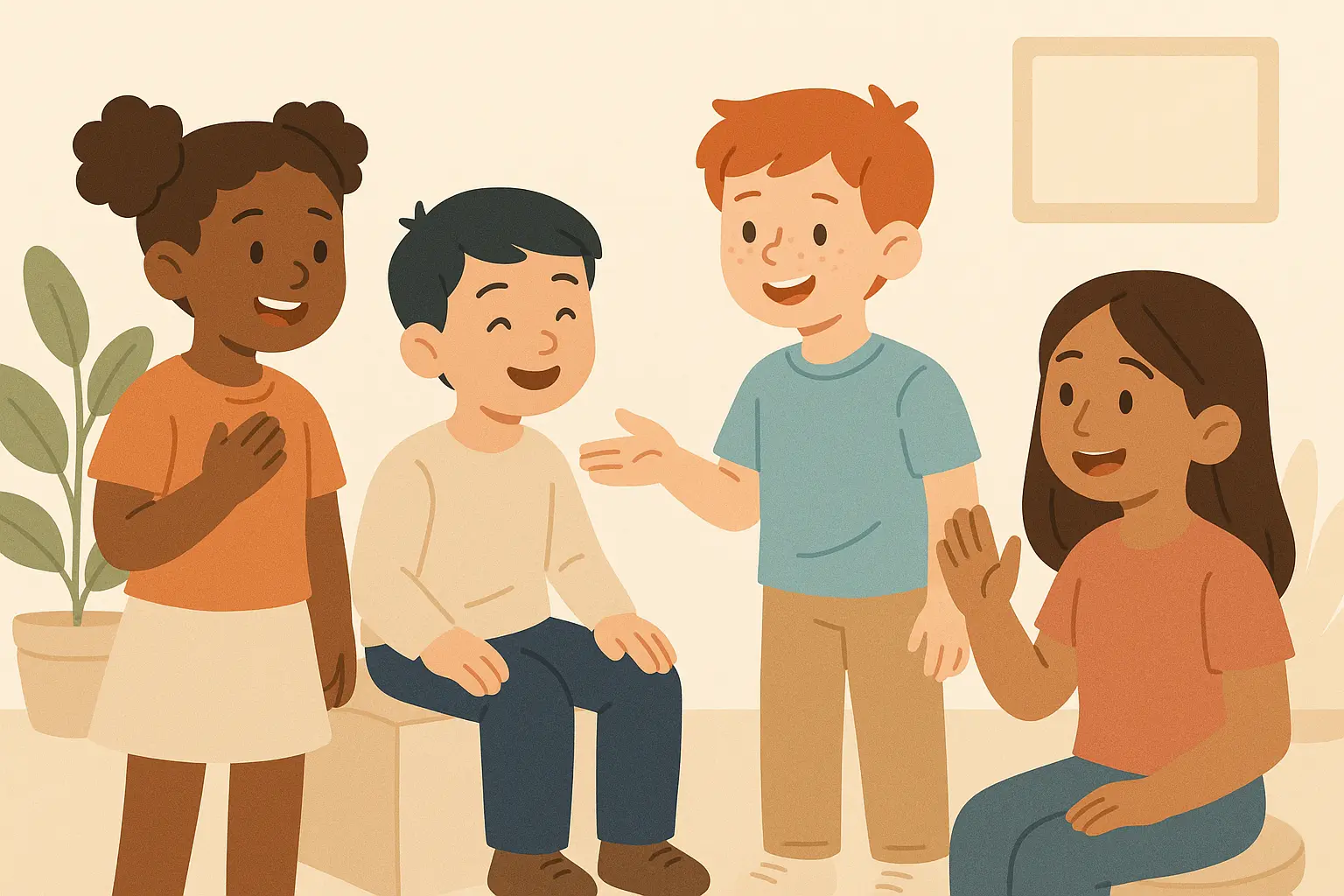
6. Making New Friends
Making friends is a wonderful way to enjoy life and share experiences with others. When I meet someone new who seems friendly, I can try to start a friendship. I begin by introducing myself with a smile and saying, ‘Hi, my name is [name]. What’s your name?’
I listen carefully when they tell me their name and try to remember it. I can ask friendly questions about their interests or hobbies. I share something about myself too. If we have something in common, I might say, ‘I like that too!’ or ‘That sounds really interesting.’
Good friends are kind to each other, share similar interests, and enjoy spending time together. If this person seems like someone I’d like to know better, I might suggest doing something together. Not everyone will become my friend, and that’s okay. Some people are just friendly acquaintances, and that’s perfectly normal too.
This story breaks my heart and fills it at the same time. The part about “not everyone will become my friend” is crucial—it sets realistic expectations and prevents disappointment.
7. Asking for Help
Sometimes I need help with something. It’s okay to ask for help. I can raise my hand or walk up to someone. I say ‘Excuse me’ first. Then I say ‘Can you please help me with ___?’ I wait for them to help me. I say ‘Thank you’ when they’re done helping.
Alex used to sit in math class completely confused rather than ask questions. After practicing this story for two weeks, he raised his hand for the first time. His teacher was thrilled to help, and Alex felt proud of advocating for himself.
8. Joining a Conversation
Joining a conversation with others is a social skill that takes practice. First, I listen to what people are talking about by standing nearby and paying attention. I wait for a natural pause in the conversation – this is when someone finishes speaking and there’s a brief quiet moment.
I make eye contact with the people talking and use a friendly voice to join in. I might say, ‘That sounds interesting’ or ask a question about what they’re discussing. If they’re talking about something I know about, I can share my thoughts appropriately.
I make sure to take turns talking and not interrupt when others are speaking. If the conversation moves to a topic I don’t know about, I can listen and learn, or I can politely excuse myself. Good conversations involve everyone, and each person gets a chance to speak and listen.
This one needs lots of role-playing at home before trying it in real situations. Practice with family dinner conversations first.
9. Giving and Receiving Compliments
Compliments are nice things we say to other people. When someone does something good, I can say ‘Good job!’ or ‘I like your shirt.’ When someone gives me a compliment, I say ‘Thank you.’ Compliments make people feel happy.
Simple but powerful. I’ve seen kids light up when they realize they can make others feel good with their words.
10. Disagreeing Politely
Sometimes I have a different opinion than someone else, and that’s perfectly normal. People can disagree and still be friends or get along well. When I disagree with someone, I use respectful words and a calm voice.
Instead of saying ‘You’re wrong!’ I can say ‘I see it differently’ or ‘I have a different opinion.’ I can explain my viewpoint while listening to their perspective too. Sometimes I might learn something new, or I might help them understand my point of view.
If we can’t agree, that’s okay too. I can say something such as, ‘I guess we’ll have to agree to disagree’ and then change the subject to something we both enjoy. Disagreeing respectfully shows maturity and helps maintain good relationships with others.
This is advanced stuff. Don’t try this until your kid has mastered basic conversation skills.
11. Understanding Personal Space
Everyone has personal space around their body. Personal space is about arm’s length away. I keep this much space between me and others unless they’re family or close friends. If someone steps back, I don’t move closer. Respecting personal space helps everyone feel comfortable.
Some kids need this demonstrated with hula hoops or tape on the floor. Make it visual and concrete.
School and Learning Environment Stories
These stories can be gold mines if your kid’s teacher is on board. Share them with the school team—they’ll appreciate having specific language to use consistently across different settings.
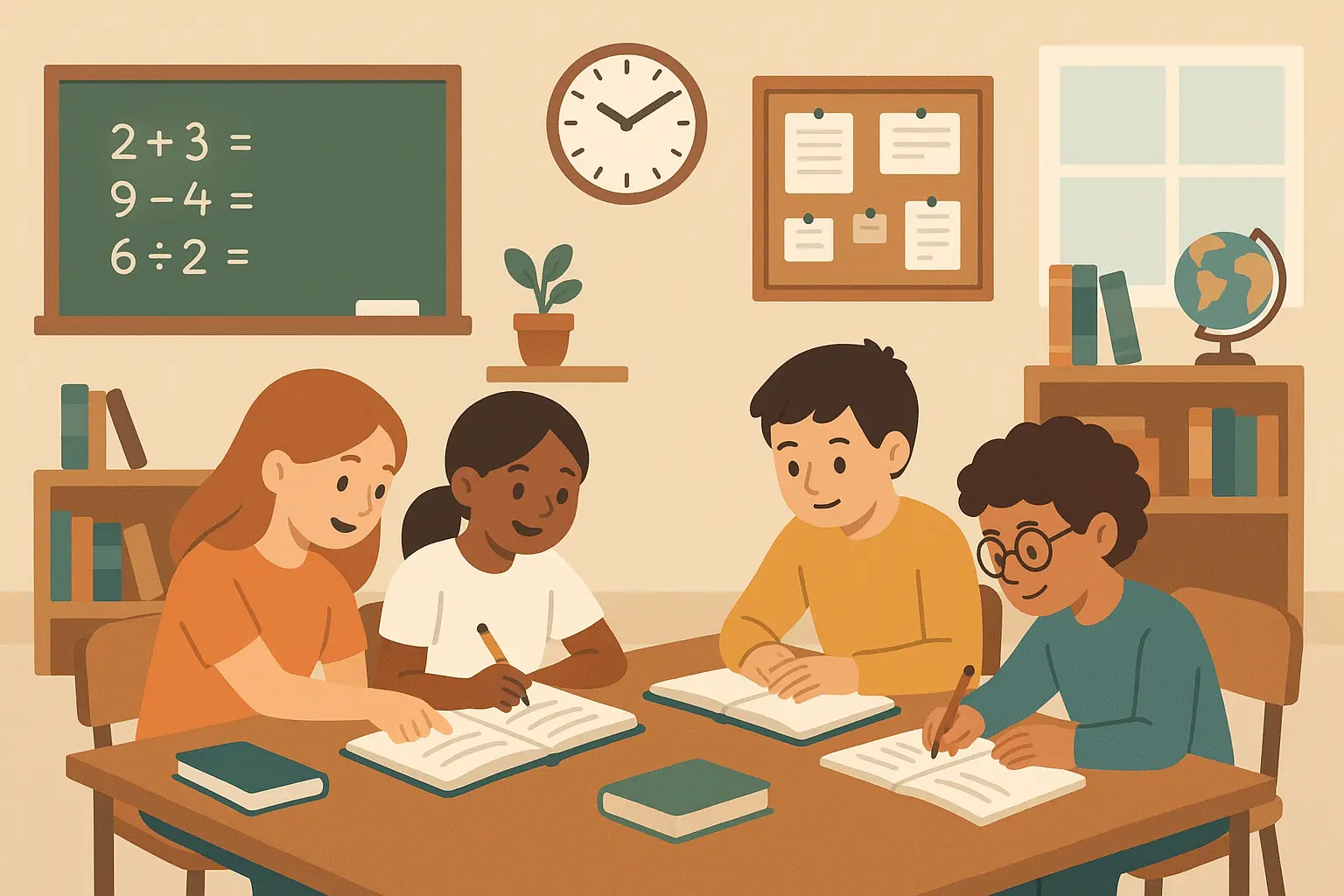
12. Participating in Group Projects
Group projects are assignments where I work with other students to complete a task together. When my teacher announces a group project, I listen carefully to the instructions and requirements. If I can choose my group members, I think about classmates who are responsible and whose company I enjoy.
During our first meeting, we discuss the project requirements and divide the work fairly among all group members. I volunteer for tasks that match my strengths and interests. Throughout the project, I complete my assigned work on time and communicate with my group members about any questions or concerns.
I attend all group meetings and participate in discussions by sharing my ideas and listening to others. If there’s a disagreement, I work with my group to find a solution that works for everyone. When we present our project, I speak clearly about my part and support my group members during their presentations.
Group projects are tough for everyone, but especially challenging for kids with autism. This story helps, but you might need to advocate for modified group work or specific role assignments.
13. Asking Questions in Class
When I don’t understand something in class, I can ask a question. I raise my hand and wait for the teacher to call on me. I say ‘I have a question about ___’ or ‘Can you explain ___?’ The teacher will help me understand. Asking questions helps me learn better.
Practice the actual hand-raising and waiting part at home. Some kids need to learn the physical mechanics before they can focus on the social aspects.
14. Dealing with Test Anxiety
Feeling nervous before a test is normal, and there are strategies I can use to manage these feelings. Before test day, I prepare by studying the material, reviewing my notes, and getting a good night’s sleep. On the morning of the test, I eat a healthy breakfast and arrive at school with enough time to settle in.
When I receive the test, I take three deep breaths and read all the instructions carefully before beginning. If I feel anxious during the test, I can pause, take slow deep breaths, and remind myself that I studied and am prepared.
I start with questions I know well to build my confidence, then move to more challenging ones. If I don’t know an answer, I skip it and come back to it later. I use positive self-talk and remember that one test doesn’t define me. I can always learn from the experience to do better next time.
Test anxiety is real, and this story validates those feelings while giving concrete coping strategies. Practice the breathing techniques during low-stress homework time first.
15. Transitioning Between Classes
When it’s time to change classes, I pack up my materials quietly. I walk calmly in the hallway. I go directly to my next classroom. I get my materials ready for the next class. Smooth transitions help me stay focused on learning.
Simple but essential. Many meltdowns happen during transitions because they’re chaotic and unpredictable.
16. Working with a Substitute Teacher
Sometimes my regular teacher is absent and a substitute teacher comes to our class. This is a normal part of school life. The substitute teacher is there to help us learn and keep us safe, just as our regular teacher does.
When I meet the substitute, I introduce myself politely and follow the same classroom rules I always follow. The substitute might do things differently than my regular teacher, and that’s okay. I listen carefully to their instructions and ask questions if I’m unsure about something.
If the substitute doesn’t know our usual routines, I can helpfully explain them in a respectful way. I complete all assignments the substitute gives me, even if they’re different from what I expected. Being flexible and respectful with substitute teachers shows maturity and helps our class run smoothly.
Substitute days can be disasters without preparation. Read this story the night before if you know a sub is coming.
Emotional Regulation and Coping Stories
These are absolute game-changers, but they take time. Don’t expect overnight miracles. I’ve had parents tell me it took months to see changes, and then suddenly their kid started using the language from these stories during tough moments.
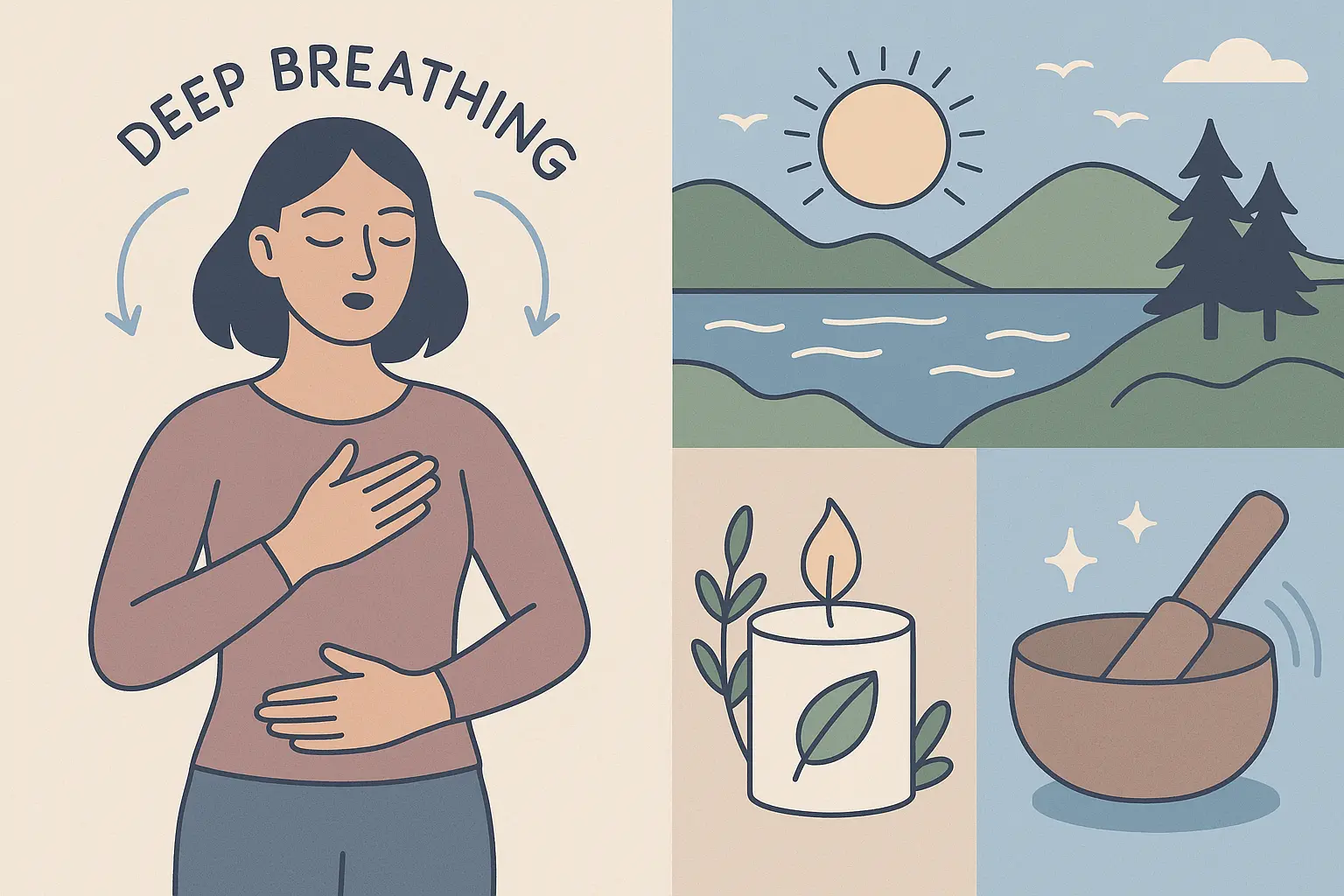
17. Managing Overwhelming Feelings
Sometimes I feel overwhelmed when too many things happen at once or when situations become too intense for me to handle comfortably. When this happens, my body might feel tense, my heart might beat faster, or I might feel the urge to escape. These feelings are normal, and I have strategies to help myself feel better.
First, I recognize that I’m feeling overwhelmed by noticing the signs in my body and mind. Then, I can use my coping strategies. I might take slow, deep breaths, counting to four as I breathe in and four as I breathe out. If possible, I can move to a quieter space or ask for a break.
I can use positive self-talk and remind myself that this feeling will pass. Sometimes it helps to do a calming activity or hold a stress ball. If I’m at school, I can ask to visit the counselor. After I feel calmer, I can think about what made me feel overwhelmed and plan how to handle similar situations in the future.
I’ve had parents tell me this story saved their family dinner time. The key is teaching kids to recognize the early warning signs before they’re completely overwhelmed.
|
Feeling |
What Your Body Does |
What You Can Try |
Who Can Help |
|---|---|---|---|
|
Overwhelmed |
Heart races, muscles tight, want to run away |
Deep breathing, quiet space, stress ball |
School counselor, trusted adult |
|
Disappointed |
Sad, frustrated, want to hide |
Self-talk, comfort activities, time |
Family member, friend, teacher |
|
Angry |
Hot feeling, tight muscles, want to yell or hit |
Count to ten, move your body, use words |
Safe space, counselor, parent |
|
Worried |
Butterflies in stomach, can’t sit still, worried thoughts |
Breathing exercises, grounding techniques |
Mental health professional, support group |
18. Dealing with Disappointment
Sometimes things don’t go the way I want them to. This is called disappointment. It’s okay to feel sad or upset when I’m disappointed. I can take deep breaths, talk to someone I trust, or do something I enjoy. Disappointment is a normal feeling that goes away with time.
Short and sweet because disappointment hits fast and kids can’t process long explanations when they’re upset.
19. Expressing Anger Appropriately
Anger is a normal emotion that everyone feels sometimes. When I feel angry, my body might feel hot, my muscles might tense up, or I might want to yell or hit something. Instead of acting on these impulses, I can use healthy ways to express my anger.
First, I recognize that I’m angry by noticing how my body feels. Then I can take several deep breaths to help my body calm down. I can count to ten slowly or remove myself from the situation if possible. When I feel calmer, I can express my anger using words.
I might say, ‘I feel angry because…’ to explain what’s bothering me. I can talk to a trusted person about my feelings. Physical activities can help me release angry energy safely. I never hurt people or break things when I’m angry. After I’ve calmed down, I can think about what made me angry and work on solving the problem.
This one needs careful practice in controlled settings. Role-play different scenarios when everyone’s calm.
20. Celebrating Achievements
When I accomplish something or reach a goal, it’s important to celebrate! I can smile, tell someone about my success, or do something special that I enjoy. Celebrating my achievements helps me feel proud and motivated to keep trying new things.
Some kids need permission to feel proud. This story gives them that permission.
21. Coping with Changes in Routine
Routines help me feel secure and know what to expect, but sometimes routines need to change. Changes might happen because of weather, special events, emergencies, or other reasons beyond my control. When I learn about a change in my routine, I might feel anxious, confused, or upset, and these feelings are normal.
To help myself cope with changes, I can ask questions about what will happen instead. I can write down or visualize the new schedule to help me understand it better. I can identify parts of my routine that will stay the same – these are my anchors that provide stability.
I can use my coping strategies and remind myself that I’ve successfully handled changes before. If possible, I can prepare for the change by learning about what to expect. I can also ask for support from trusted adults who can help me navigate the change successfully.
Changes in routine can trigger major meltdowns. This story helps, but advance warning is crucial whenever possible.
Community and Independence Stories
Don’t even attempt these until you’ve mastered the basics at home. These are advanced skills that require lots of real-world practice in safe situations first.
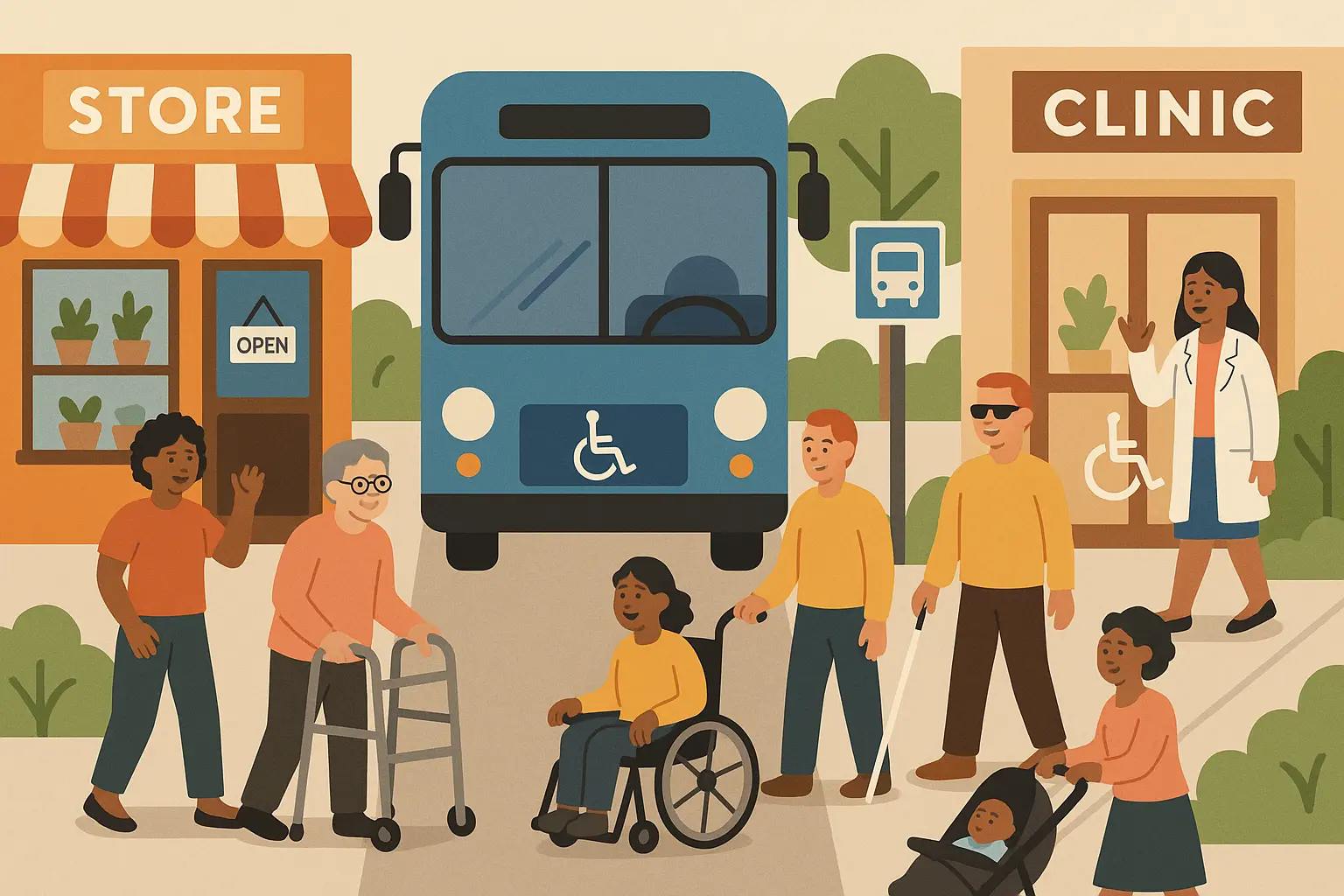
22. Using Money and Making Purchases
Learning to use money independently is an important life skill that gives me freedom and confidence. Before going shopping, I make a list of what I need and check how much money I have available to spend. I bring enough money for my purchases plus a little extra for tax.
At the store, I find the items on my list and check their prices to make sure I have enough money. When I’m ready to pay, I go to the checkout counter and wait in line patiently. I greet the cashier politely and place my items on the counter.
The cashier tells me the total amount. I count out my money carefully or use my debit card if I have one. I wait for my change and receipt, then say ‘thank you’ before leaving. If I make a mistake with counting, I can ask the cashier to help me. Learning to handle money transactions helps me become more independent in my community.
Maria started with supervised grocery trips using a $10 budget. Her mother helped her practice counting money at home using play scenarios. After six months of consistent practice with this social story, Maria now independently shops for her weekly snacks and has successfully handled situations involving incorrect change and forgotten items.
23. Riding in Elevators
When I need to use an elevator, I press the button and wait for it to arrive. I let people exit first, then I enter. I press the button for my floor. I stand quietly while the elevator moves. When it stops at my floor, I exit politely and let the doors close.
Elevators can be overwhelming with the sounds, movement, and close quarters. Practice this in low-stress situations first.
24. Visiting the Doctor or Dentist
Medical and dental visits are important for keeping my body healthy. Before my appointment, I can prepare by writing down any questions or concerns I have. I arrive on time and check in with the receptionist. In the waiting room, I sit quietly and engage in calm activities.
When it’s my turn, I follow the nurse or assistant to the examination room. I answer the doctor’s or dentist’s questions honestly, even if I feel embarrassed about something. If I don’t understand something, I ask them to explain it in simpler terms.
During the examination, I try to relax and follow their instructions. If I feel anxious, I can use my breathing techniques or ask for a break if needed. The healthcare provider is there to help me, not to hurt me. After the visit, I can ask questions about any treatments or follow-up care.
Healthcare visits can be scary. This story helps, but consider visiting the office beforehand just to see the space when there’s no appointment pressure.
25. Participating in Community Events
Community events are fun ways to meet people and try new activities. I can go with family or friends. I follow the event rules and treat others kindly. I can try new activities or watch others participate. Community events help me feel connected to my neighborhood.
Start with small, familiar events before attempting large community gatherings.
Breaking Down What Makes These Stories Work
Let me break this down in plain English. Daily living stories? These are your bread and butter—start here. Social interaction stories? These are the tough ones that’ll test your patience, but they’re worth it. School stories? Gold mines if your kid’s teacher is on board. Emotional regulation? Absolute game-changers, but they take time. Community stories? Don’t even attempt these until you’ve mastered the basics at home.

|
Story Type |
What Your Kid Needs First |
How Hard Is This? |
Will You Need to Change It? |
How You’ll Know It’s Working |
|---|---|---|---|---|
|
Daily Living Skills |
Basic understanding, can follow simple steps |
Medium – needs lots of practice |
A little – for your family’s way of doing things |
They do the task without being reminded |
|
Social Interaction |
Good language skills, understands social stuff exists |
Hard – needs role-playing and real practice |
A lot – every family and culture is different |
They have positive interactions with others |
|
School Environment |
Ready for school, can work in groups |
Medium – teacher needs to be involved |
Some – depends on your school |
Better behavior and participation in class |
|
Emotional Regulation |
Can recognize their own feelings, can communicate |
Hard – needs ongoing support and patience |
A little – feelings are universal |
Fewer meltdowns, using story language during tough times |
|
Community Independence |
Knows basic safety, can problem-solve |
Very hard – needs real-world practice |
A lot – every community is different |
Can navigate community spaces independently |
Daily Living Skills – Why These Work
The morning routine story works because it’s the same every single day. Kids with autism thrive on predictability, and mornings set the tone for everything that follows. I’ve seen families go from daily battles to peaceful mornings just by implementing this story consistently.
The grocery shopping story starts simple but can grow with your child. Begin with just getting a cart and finding one item. Add complexity as they master each step. The key is breaking down what seems automatic to us into concrete, manageable pieces.
Public transportation stories are advanced because they involve so many variables – weather, crowds, schedule changes. Don’t rush this one. Master bus stops and routes in your car first, then try short trips with lots of support.
Social Interaction – The Heart of the Challenge
Making friends is probably the hardest social skill to teach because it’s so unpredictable. The story includes that crucial line about “not everyone will become my friend” because I’ve seen too many kids get crushed when their friendly overtures aren’t returned. Setting realistic expectations prevents heartbreak.
Asking for help seems simple but requires overcoming the fear of looking different or bothering others. Practice this at home with low-stakes requests first. “Can you help me reach that book?” builds confidence for “Can you help me understand this math problem?”
Personal space is concrete enough to teach with visual aids, but cultural differences matter here. Some families are huggers, others maintain more distance. Adjust the story to match your family’s norms while teaching general social expectations.
School Environment – When Teachers Become Partners
Group projects are collaborative nightmares for many kids with autism, but this story provides a framework for success. Share it with teachers so they can use the same language and expectations. Better yet, ask them to read it to the whole class.
Test anxiety affects neurotypical kids too, so these strategies benefit everyone. The key is practicing the coping techniques during low-stress situations so they’re automatic during high-stress tests.
Substitute teacher days can derail the entire week if kids aren’t prepared. Read this story the night before when you know a sub is coming. It prevents the “everything is different and wrong” meltdown.
Emotional Regulation – The Long Game
Managing overwhelming feelings is the story I wish I’d had twenty years ago. It validates the physical sensations kids experience while giving them concrete tools. The magic happens when kids start using this language: “I’m feeling overwhelmed. I need a break.”
Anger expression appropriately focuses on safety while teaching healthy outlets. This one needs careful practice because angry kids can’t learn new skills in the moment. Role-play during calm times, then remind them of their strategies when you see early warning signs.
Change in routine stories acknowledge that flexibility is hard while providing coping strategies. The “anchors” concept—identifying what stays the same—gives kids something stable to hold onto during uncertain times.
Community Independence – Advanced Skills
Money and purchasing requires math skills, social awareness, and problem-solving abilities all working together. Start with small purchases in familiar stores with patient cashiers. Build up to more complex transactions gradually.
Healthcare visits trigger anxiety for many people, not just those with autism. This story works because it prepares kids for the unfamiliar environment and procedures while emphasizing the helpful intent of medical professionals.
Community events can be overwhelming with crowds, noise, and unpredictable activities. Start with small, structured events before attempting large festivals or gatherings.
How Modern Tools Can Help You Create Better Stories
Look, I get it. Writing these stories from scratch is exhausting. I’ve stared at blank pages at 11 PM wondering how to explain “personal space” to a kid who thinks everyone is their best friend. The good news? There are now tools that can help you get started. They’re not perfect, but they beat writer’s block every time.
Modern AI tools can be your writing partner when you’re stuck. They’re great at generating multiple versions of the same scenario, which gives you options to choose from. Instead of having just one story about grocery shopping, you could create variations for different store types, busy versus quiet times, or what to do when they’re out of your favorite item.
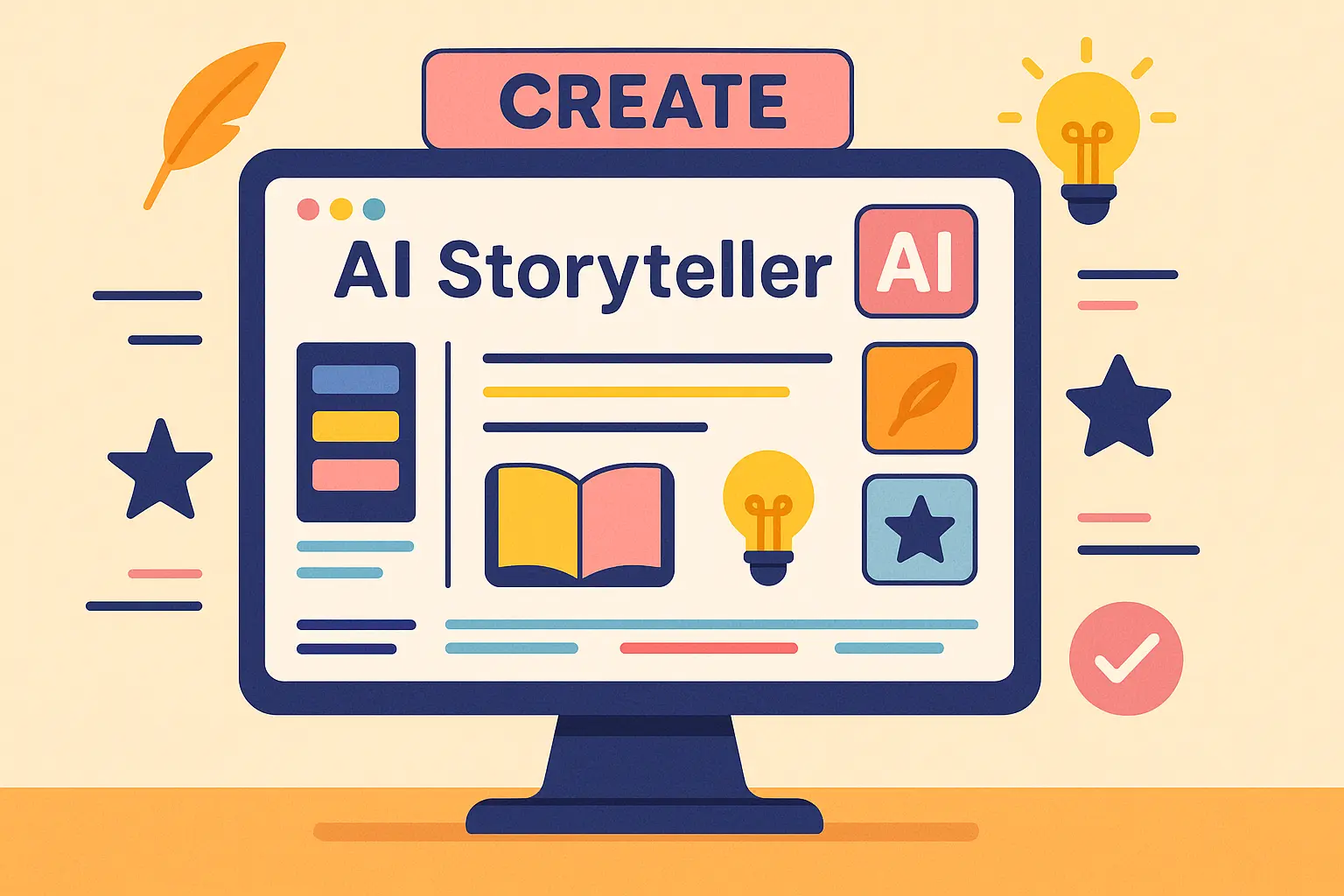
These tools can adjust the complexity level too. Tell it you need a story for a beginning reader versus an advanced one, and watch the vocabulary and sentence structure change accordingly. This is huge when you’re working with kids at different developmental levels but addressing similar social skills.
Cultural relevance is another area where AI can help. You can input specific cultural contexts, family backgrounds, and community settings to get stories that actually reflect your child’s lived experience. This isn’t just about changing names or locations—it’s about making sure the social expectations in the story match what your kid actually encounters.
The best part? You can experiment quickly. Try a first-person narrative, then switch to third-person. Add sensory details for one version, keep another version simple and direct. See what resonates with your specific child without spending hours rewriting everything from scratch.
But here’s the thing—these tools are starting points, not finished products. You still need to add the personal touches, the specific interests, the family values that make a story truly effective. Think of AI as your brainstorming buddy, not your replacement.
The Real Talk You Need to Hear
Here’s the truth: You’re going to feel like you’re failing sometimes. Your kid might ignore the story completely for weeks, then suddenly start quoting it perfectly. You might create 10 stories that flop before finding the one that clicks. That’s not failure—that’s parenting (or teaching) a kid with autism.

I’ve watched parents beat themselves up because a social story didn’t work immediately. Let me tell you about Sarah, whose son ignored the morning routine story for six weeks straight. She was ready to give up when suddenly, one Tuesday morning, he started following every step without being asked. Six weeks of seemingly wasted effort paid off in one magical morning.
Some days these stories will feel pointless. You’ll read the same words for the hundredth time to a kid who seems completely uninterested. That’s normal. That’s part of the process. The repetition that feels tedious to you is actually building neural pathways in their brain.
Let’s be real—some days these stories feel like they’re not working at all. I know it’s frustrating when you read the same story 50 times and still see no change. You’re not failing if the first story doesn’t click. I’ve scrapped more stories than I can count, and each “failed” story taught me something about what that particular child needed.
The mistake I made early on was expecting immediate results. Social stories work on autism time, not neurotypical time. Some skills show up in days, others take months. I’ve had teenagers suddenly start using language from stories I introduced when they were eight years old. The seeds you’re planting now might not bloom for years, but they’re still growing.
Your kid’s obsessions aren’t problems to solve—they’re doorways to learning. Yes, you’ll end up with a story about dinosaurs using proper bathroom etiquette, and yes, it will work better than any “normal” story you could find. Embrace the weird. Work with their brain, not against it.
Don’t compare your child’s progress to anyone else’s. The kid who masters social stories in weeks isn’t better than the one who takes months. They’re just different. Your child is on their own timeline, and that timeline is exactly right for them.
Remember that every small step forward matters more than you know. When your child uses “excuse me” instead of pushing past someone, that’s huge. When they ask for help instead of melting down, that’s victory. When they recognize they’re getting overwhelmed and ask for a break, that’s mastery.
You’re doing this work because you believe in your child’s potential. Some days that belief will feel shaky. Some days you’ll wonder if any of this matters. It does. Every story you read, every skill you practice, every moment of patience you show is building toward a more independent, confident future for your child.
The families who see the most success aren’t the ones with perfect kids or unlimited resources. They’re the ones who keep showing up, keep trying, keep believing even when progress feels invisible. They’re the ones who celebrate the small wins and learn from the setbacks.
Behind every successful social story is an adult who refused to give up, even when it felt pointless. Your persistence matters. Your child is lucky to have you in their corner. You’re teaching them more than social skills—you’re teaching them that they’re worth the effort, that their success matters, that someone believes in them completely.
The ultimate goal isn’t perfection. It’s progress. It’s helping your child navigate their world with a little more confidence, a little more independence, a little more joy. These stories are just tools, but in the right hands—your hands—they can open doors to possibilities you might not have imagined.
Keep going. Keep reading. Keep believing. Your child’s future self will thank you for not giving up, even on the days when it felt like nothing was working. You’re planting seeds that will grow into skills, confidence, and independence. Trust the process, trust your child, and trust yourself.
Sometimes the most important thing you can do is simply show up with another story, another chance, another opportunity for growth. That’s not just good parenting or teaching—that’s love in action.



Add comment